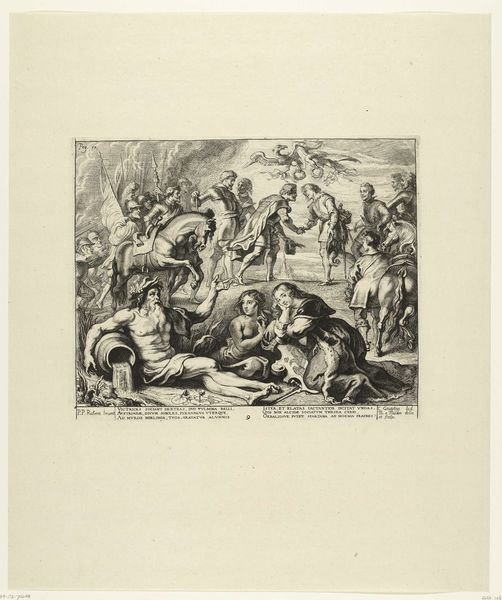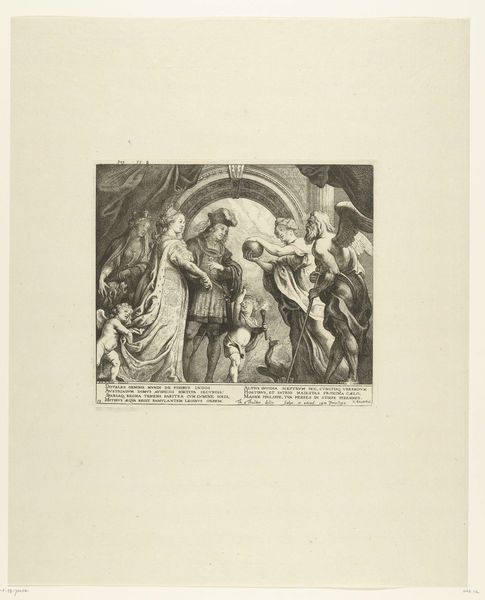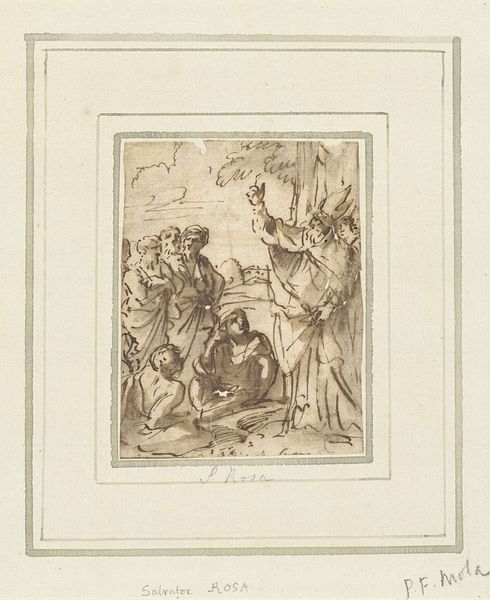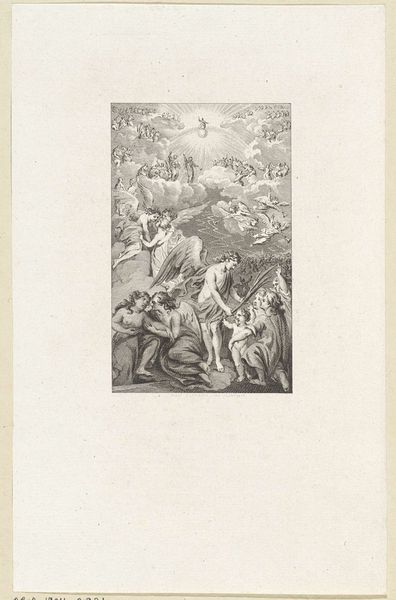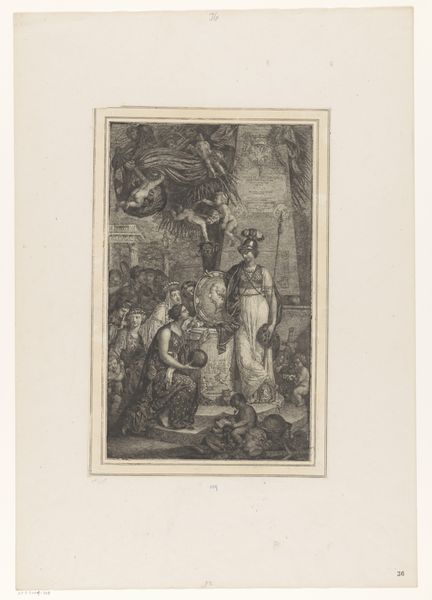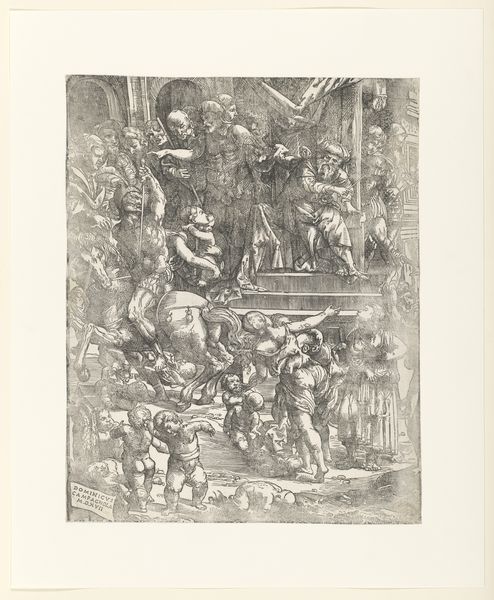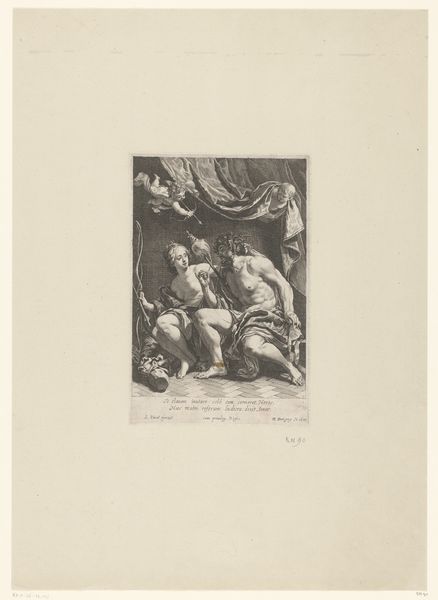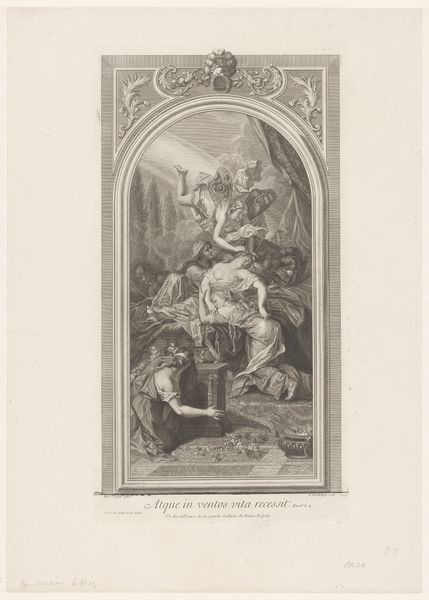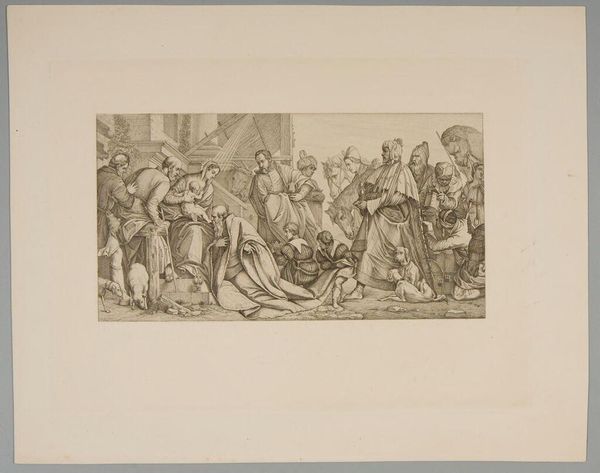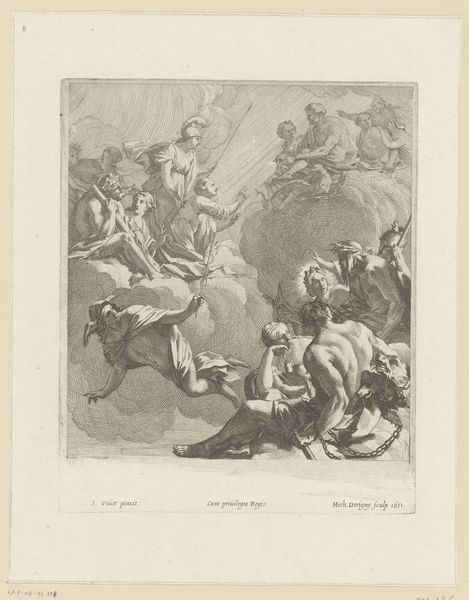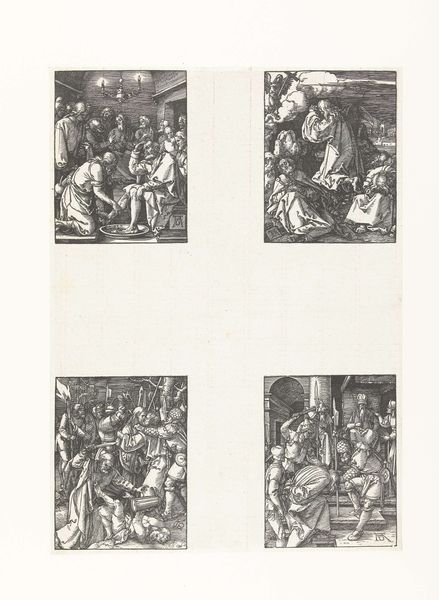
De komst van de prins; intocht van Ferdinand te Antwerpen in 1635 (nr. 8) 1639 - 1641
0:00
0:00
print, paper, engraving
#
narrative-art
#
baroque
# print
#
old engraving style
#
figuration
#
paper
#
linocut print
#
history-painting
#
engraving
Dimensions: height 283 mm, width 314 mm
Copyright: Rijks Museum: Open Domain
Editor: Here we have Theodoor van Thulden's "The Arrival of the Prince; the entry of Ferdinand into Antwerp in 1635 (nr. 8)", an engraving on paper made between 1639 and 1641. It feels incredibly staged, like a theatrical production rather than a spontaneous event. What are your thoughts on this print? Curator: Well, let's consider Antwerp in 1635. This wasn't just a welcome; it was a carefully constructed performance of power. Think of it less as a simple depiction and more as a piece of propaganda meant to reinforce Habsburg authority. How do you think the artist achieves this sense of power? Editor: I see that the figures are almost larger than life, elevated even more by the angels hovering above. The Roman soldiers add a classical grandeur, and the woman kneeling before the prince is practically begging for attention. It is over-the-top. Curator: Exactly! And it's important to consider where this print might have been seen. It was likely reproduced and distributed widely. Images like these were crucial in shaping public perception, especially in a time of political instability. It’s like a carefully curated Instagram feed of its time, presenting only the most favorable version of reality. Editor: That makes a lot of sense. It’s interesting to think of it as early social media, managing public image. Is the choice to depict this scene in print significant, given that prints are easily disseminated? Curator: Absolutely. Printmaking allowed for mass distribution and a relatively affordable way to convey the desired message across different social strata. Think about how this image reinforced not only Ferdinand’s authority but also the structures of power in Antwerp itself. It's a fascinating case study in the relationship between art and politics. Editor: I hadn’t really thought about it in terms of its reach and the message it was deliberately trying to convey. Now, it seems like every detail was carefully chosen to amplify a political agenda. I'll definitely look at art differently going forward! Curator: Good! Now you’re considering the public role of art, and the politics embedded within.
Comments
No comments
Be the first to comment and join the conversation on the ultimate creative platform.
